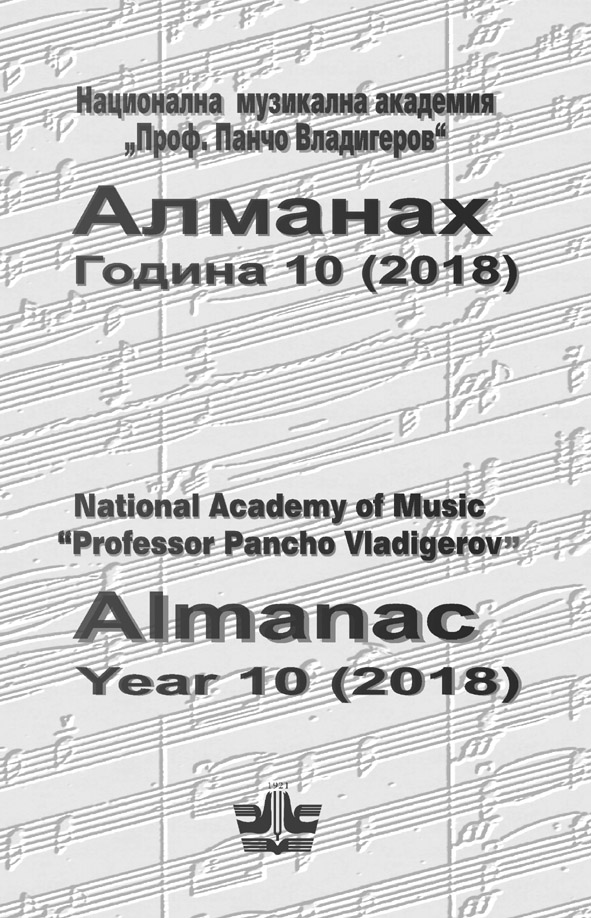Слуховият анализ: Незаменим предмет на музикалното образование или троянски кон на преувеличената „модерна“ педагогика? Ново, допълнително педагогическо средство или отделна, самостоятелна дисциплина?
Auditory Analysis: Аn Indispensable Subject in the Music Education or а Trojan Horse of the Exaggerated “Modern” Pedagogy? A New, Additional Pedagogical Tool or a Separate, Independent Subject?
Author(s): Violaine De LarminatSubject(s): Fine Arts / Performing Arts, Music
Published by: Издателство НМА „Проф. Панчо Владигеров”
Keywords: didactics; pedagogy; auditory analysis; formal analysis; solfeggio; methodology
Summary/Abstract: The term “analysis” can be used in many different ways, and take on different meanings: starting from an emphatic new name for dictation exercises in traditional training of solfeggio; going to purely harmonic (in most cases tonal!) оr metric exploration of singularly completed compositional constructions, or meaning a general musical understanding of “formal analysis”, this concept oscillates between the description of each of these decoding processes that may actually look like a real “analysis” to the brain, and require a profound process of reflection, enabling a complex synthesis between theoretical, historical, stylistic, aesthetic and cultural experience. Such too wide a range in modern terminology18often leads to misunderstandings and dubious reactions to auditory analysis, attempting to establish itself either as a new discipline or as a part of solfeggio. A new discipline also has a new methodology and a clear goal. In addition, technical prerequisites that seem necessary for such a discipline must be clearly explained. Without setting this question, and without defining clearly the fluctuation between necessary theoretical knowledge that must be based on effective and competent auditory training – and the equally necessary trained hearing abilities that must be available for music theory education, there is a danger of the aforementioned theoretical disciplines to becoming an indiscriminate “blend”, and the corresponding specific contents not to be covered particularly purposefully and thoroughly, despite their seeming attractiveness for students. Although auditory analysis is a relatively new discipline, and in some respects is viewed rather with skepticism as a “modern phenomenon”, it does not intend to compete with traditional analysis of works: it is a fruitful complement to traditional teaching of analysis on one hand, where it clearly emphasizes the importance of sound idea for musical analysis, and can explain the particular problems of sound perception, while on the other hand it contains an immediate face-off with sound reality and musical experience, and is closely related to music practice, expressed humorously by Gérard Grisey: “Do not confuse the map with the landscape!”
Journal: Алманах - Национална музикална академия „Проф. Панчо Владигеров“
- Issue Year: 2019
- Issue No: 10
- Page Range: 45-72
- Page Count: 28
- Language: Bulgarian

